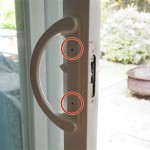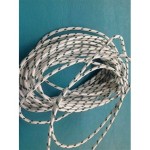How To Get Rid Of Ants On Patios
Ants on patios can be a significant nuisance, disrupting outdoor relaxation and potentially leading to infestations indoors. Understanding ant behavior and employing effective removal strategies are crucial for maintaining a pest-free patio environment. This article provides a comprehensive guide to identifying ant species commonly found on patios, understanding their attraction factors, and implementing various methods to eliminate them and prevent their return.
Identifying the Ant Species
Before implementing ant control measures, it is essential to identify the specific species infesting the patio. Different ant species exhibit varying behaviors and preferences, influencing the effectiveness of different treatment approaches. Common ant species found on patios include:
Pavement Ants: These small, dark brown ants are commonly found nesting under pavement slabs and along cracks in patios. They are omnivorous and are attracted to crumbs, spilled food, and sugary substances.
Odorous House Ants: Known for their distinctive coconut-like odor when crushed, odorous house ants are attracted to moisture and sweets. They often nest in wall voids, under floors, and in mulch, and can be a persistent patio pest.
Argentine Ants: These light to dark brown ants are highly adaptable and can form large colonies. They are attracted to honeydew produced by aphids and scales on plants, as well as crumbs and sugary substances. Argentine ants are known for their ability to displace other ant species.
Carpenter Ants: Larger than most other ant species, carpenter ants excavate wood to create nests. While they do not eat wood, they can cause structural damage to wooden patio furniture, decks, and other wooden structures.
Correct identification facilitates the selection of the most appropriate and effective control methods. Inspection of ant trails, nesting sites, and physical characteristics can aid in species identification. Online resources and professional pest control services can provide assistance in accurately identifying the ant species present.
Understanding Ant Attraction Factors
Ants are attracted to patios for several reasons, including food sources, water availability, and nesting opportunities. Eliminating these attractants is a crucial step in controlling ant infestations:
Food Sources: Crumbs, spilled drinks, pet food, and decaying organic matter provide readily available food sources for ants. Regularly cleaning the patio to remove food debris is essential. Sweeping, hosing down surfaces, and promptly cleaning up spills are effective preventative measures.
Water Sources: Leaky faucets, stagnant water in plant saucers, and condensation can provide ants with the moisture they need to survive. Fixing leaks and eliminating standing water will reduce the attractiveness of the patio to ants. Ensure proper drainage to prevent water accumulation after rain.
Nesting Sites: Cracks in pavement, gaps between patio stones, and areas under furniture can provide ants with sheltered nesting sites. Sealing cracks and crevices, and removing debris that could provide harborage, will help to deter ants from establishing colonies on the patio. Consider elevating furniture slightly to allow for better ventilation and prevent moisture buildup underneath.
Plants and Aphids: Some plants attract insects, such as aphids, which produce a sugary substance called honeydew. Ants are attracted to honeydew and will protect aphids from predators in order to harvest it. Controlling aphid infestations on patio plants is essential for reducing ant activity. Regular inspection of plants for aphids and prompt treatment with insecticidal soap or other appropriate methods can help to eliminate this food source.
Implementing Ant Control Methods
A variety of ant control methods can be employed to eliminate ants from patios. The most effective approach often involves a combination of strategies, including preventative measures, natural remedies, and chemical treatments:
Preventative Measures: These are the first line of defense against ant infestations. Regularly cleaning the patio, eliminating food and water sources, and sealing cracks and crevices will help to deter ants from establishing colonies. Store food in airtight containers and promptly clean up spills. Consider using citronella candles or other natural repellents to deter ants from the area.
Natural Remedies: Several natural remedies can be used to repel or kill ants. These options are often safer for the environment and for use around children and pets.
Vinegar Solution: A mixture of equal parts white vinegar and water can be sprayed directly on ants to kill them. Vinegar disrupts their scent trails, making it difficult for them to find their way back to the colony. This solution can also be used to clean patio surfaces and remove ant trails.
Borax and Sugar: A mixture of borax and sugar acts as a slow-acting poison. Ants are attracted to the sugar and carry the borax back to the colony, where it is ingested by other ants, eventually killing the colony. Combine one teaspoon of borax with one tablespoon of sugar and one cup of warm water. Soak cotton balls in the solution and place them near ant trails. Keep the cotton balls moist and replenish the solution as needed. This method should be used with caution, especially around children and pets, as borax can be harmful if ingested.
Diatomaceous Earth (DE): This naturally occurring powder is made from fossilized algae. It is non-toxic to humans and pets but is deadly to ants. DE works by dehydrating the ants' exoskeletons. Sprinkle DE around ant trails, nesting sites, and other areas where ants are present. Be sure to use food-grade DE, as other types may contain harmful additives. Reapply after rain or watering.
Essential Oils: Certain essential oils, such as peppermint, tea tree, and clove oil, are known to repel ants. Mix a few drops of essential oil with water and spray the solution around the patio. Alternatively, soak cotton balls in essential oil and place them near ant trails. Reapply regularly, as the scent will dissipate over time.
Chemical Treatments: When natural remedies are insufficient, chemical treatments may be necessary to eliminate ant infestations. These treatments should be used with caution and according to the manufacturer's instructions. It's important to consider the potential impact on the environment and non-target organisms.
Ant Baits: Ant baits contain a slow-acting poison mixed with a food attractant. Ants carry the bait back to the colony, where it is shared with other ants, eventually killing the colony. Choose a bait that is specifically formulated for the ant species you are targeting. Place bait stations near ant trails and in areas where ants are frequently seen. Monitor the bait stations regularly and replenish them as needed. Avoid spraying insecticides near bait stations, as this may deter ants from taking the bait.
Insecticide Sprays: Insecticide sprays can be used to kill ants on contact and to create a barrier that prevents them from entering the patio. Choose a spray that is specifically labeled for outdoor use and follow the manufacturer's instructions carefully. Spray around the perimeter of the patio, along ant trails, and in areas where ants are nesting. Avoid spraying directly on plants, as this may damage them. Be aware that insecticide sprays can also harm beneficial insects, so use them judiciously.
Granular Insecticides: Granular insecticides can be applied to lawns and gardens to control ant populations. These products work by killing ants that come into contact with the granules. Choose a granular insecticide that is specifically labeled for ant control and follow the manufacturer's instructions carefully. Apply the granules evenly over the affected area and water them in according to the product label.
Professional Pest Control: In cases of severe or persistent ant infestations, it may be necessary to seek professional pest control services. Pest control professionals have the knowledge, experience, and equipment to effectively eliminate ant colonies and prevent future infestations. They can also identify the ant species present and recommend the most appropriate treatment options. Before hiring a pest control company, be sure to research their reputation and read reviews. Ask about their treatment methods, safety precautions, and guarantees.
Regardless of the control method used, it is essential to monitor the patio regularly for ant activity and to take corrective action as needed. Persistence and consistency are key to successfully eliminating ant infestations and maintaining a pest-free patio environment.

How To Get Rid Of Ants In Your Pavers Pestxpert

How To Get Rid Of Ants Under Your Brick Patio S Pavers

How To Get Rid Of Ants Under Your Brick Patio S Pavers

How To Kill Outside Ants Naturally Life Should Cost Less

How To Eradicate A Pavement Ant Infestation Gardener S Path

How To Get Rid Of Ants The Home Depot

How To Get Rid Of Ants Inside Outside True Value

Top 10 Tips To Get Rid Of Carpenter Ants Quickly Cedarcide
How To Get Rid Of Ants According Pest Control Experts

How To Eradicate A Pavement Ant Infestation Gardener S Path
Related Posts








